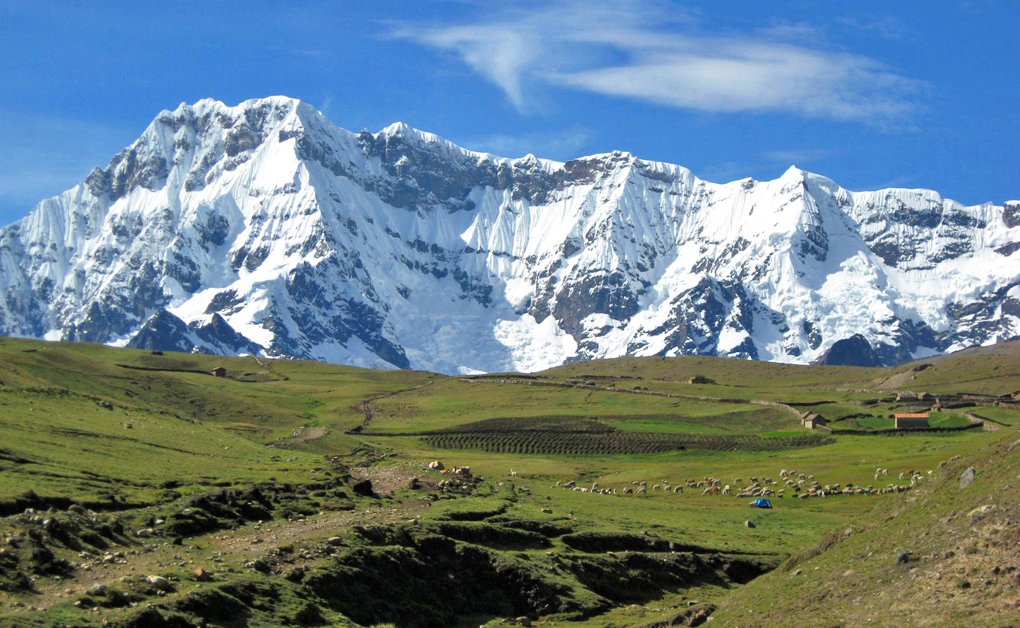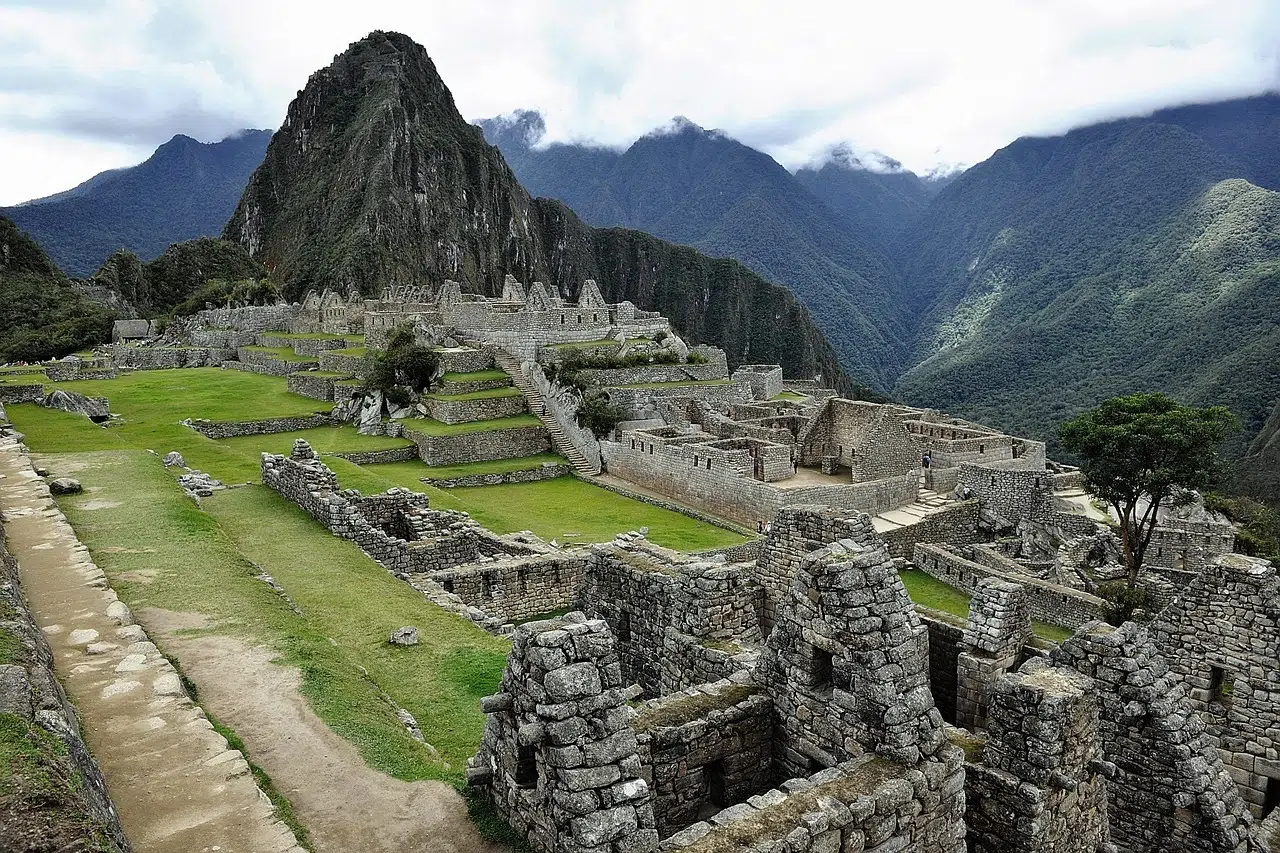The Ausangate Trek is one of the most impressive and remote hiking routes in Peru. Often overshadowed by the Inca Trail and other popular routes, this trek around the majestic Mount Ausangate takes hikers through breathtaking landscapes of snow-capped peaks, turquoise lakes, and vast Andean plains. This less-traveled path provides an authentic connection to nature and local culture, making it one of the best options for adventurers seeking a unique experience in the Andes.
Table of Contents
What is the Ausangate Trek?
The Ausangate Trek is a high-altitude hike that circles the sacred Mount Ausangate (6,384 meters), the highest mountain in the Cusco region and one of the most revered by local communities.
- Ausangate mountain trek: This circuit offers an authentic Andean experience, passing through traditional Quechua villages, herds of alpacas, and views of glaciers and lakes.
- Cultural significance: Mount Ausangate is a sacred mountain in the Andean worldview, and along the trek, it’s common to encounter local shepherds and their traditional way of life, adding cultural value to the experience.
Ausangate Trek Itinerary
The Ausangate Trek typically lasts 5 days, but there are longer variations. Below is the classic 5-day itinerary:
Day 1: Tinki to Upis
The trek begins in Tinki, a small village southeast of Cusco. The hike takes you to Upis, where you can relax in hot springs with stunning views of Mount Ausangate.
Day 2: Upis to Ausangatecocha Lagoon
After crossing the Arapa Pass (4,850 m), the landscape transforms into snowy mountains and glaciers surrounding the beautiful Ausangatecocha Lagoon.
Day 3: Palomani Pass and Chillca Valley
This is one of the most challenging days, crossing the Palomani Pass (5,200 m), the highest point of the trek, followed by a descent into the Chillca Valley.
Day 4: Sibinacocha Lagoons
This day explores the stunning Sibinacocha Lagoons, surrounded by glacial landscapes and alpaca grazing fields.
Day 5: Return to Tinki
The final day is a relaxed walk back to Tinki, where the trek concludes.
Extended option: Some 6- or 7-day itineraries include a visit to the famous Rainbow Mountain (Vinicunca), a detour that adds a special highlight to the trek.
How Difficult is the Ausangate Trek?
The Ausangate Trek difficulty is rated as high due to its extreme altitude and long hiking days on rugged terrain.
- Altitude and weather: With points reaching over 5,200 meters, the trek requires good acclimatization and physical endurance.
- Comparison with other treks: Unlike more popular routes like the Salkantay Trek, the Ausangate Trek is more remote and presents a greater challenge in terms of altitude and logistics.
- Preparation tips: A strong fitness level is recommended, and spending a few days in Cusco to acclimate to the altitude is crucial.
Best Time to Do the Ausangate Trek
The best time to visit the Ausangate Trek is during the dry season, which runs from May to September.
- Dry season: Clear skies and stable temperatures make this the ideal time to enjoy the views without worrying about rain.
- Rainy season (October to April): While the trek is still possible, rainy conditions make the trails more challenging and reduce visibility of the mountains.
What to Pack for the Ausangate Trek
A high-altitude trek requires specialized gear. Here’s a list of essential items for the Ausangate Trek:
- Thermal clothing and layers: Temperatures can vary dramatically, from warm days to freezing nights.
- Camping gear: If you plan to trek without a guide, you’ll need a sturdy tent, a sleeping bag suitable for high altitudes, and cooking equipment.
- Personal items: Sunscreen, sunglasses, trekking poles, and enough food for the duration of the trek.
- Altitude protection: Carry coca leaves or altitude sickness medication to prevent severe symptoms.
Altitude and Acclimatization: What You Need to Know
The Ausangate Trek reaches significant altitudes, with the highest point at 5,200 meters. This makes it one of the highest treks in the region, and proper acclimatization is essential.
- How to prevent altitude sickness: It’s important to acclimate in Cusco (3,400 m) for at least 2-3 days before starting the trek. It’s also recommended to carry preventive medication and know the symptoms of altitude sickness.
- What to do if you experience symptoms: If you feel a headache, nausea, or dizziness, it’s crucial to descend immediately and rest.
Guided vs Independent Trek: Which is Better?
- Ausangate guided trek: Opting for a guided trek provides security, convenience, and organized logistics (equipment, food, transportation). You’ll also have a knowledgeable guide to explain the local culture and history.
- Ausangate Trek without a guide: It is possible to trek independently, but this is recommended only for experienced hikers. You’ll need to plan your route, carry all your gear, and be prepared for the extreme conditions.
Approximate costs: Guided tours range between $500 and $800 per person, depending on the duration and included services.
Camping on the Ausangate Trek
Ausangate Trek camping is a magical experience. Campsites are located in remote, isolated areas, offering clear skies and views of snow-capped peaks and shimmering lakes.
- Campsites: Key camping areas include Upis, Ausangatecocha Lagoon, and Chillca.
- Tips for camping at high altitude: Use a high-quality tent and sleeping bag suitable for sub-zero temperatures. Additionally, ensure you stay hydrated to combat the effects of altitude.
Flora, Fauna, and Scenic Highlights
The Ausangate Trek is a feast for nature lovers and photographers. Along the route, you’ll encounter:
- Wildlife: Vicuñas, alpacas, llamas, and, if you’re lucky, Andean condors soaring above the peaks.
- Photography opportunities: Turquoise lakes such as Sibinacocha and Ausangatecocha, alongside towering glaciers and snow-capped mountains, provide postcard-perfect views at every turn.
- Upis hot springs: Don’t miss the chance to relax in these natural hot springs with views of Mount Ausangate.
Frequently Asked Questions (FAQs)
How long is the Ausangate Trek?
The classic trek lasts 5 days, though there are options for 6- or 7-day versions.
How difficult is the Ausangate Trek?
It’s considered a difficult trek, mainly due to the high altitude and long days of hiking.
What is the best time to visit the Ausangate Trek?
May to September, during the dry season.
What should I pack for the Ausangate Trek?
Thermal clothing, camping gear, sunscreen, and items for altitude protection.
Is it necessary to hire a guide?
It’s not mandatory, but highly recommended for safety and convenience.
How do I get to Ausangate from Cusco?
You can take private or public transportation to Tinki, the starting point of the trek.
Is there a risk of altitude sickness on the Ausangate Trek?
Yes, which is why acclimatization is essential before starting the trek.
Can I camp during the Ausangate Trek?
Yes, camping is the most common form of accommodation during the trek.
What is the altitude of the Ausangate Trek?
The highest point is 5,200 meters at Palomani Pass.
How does the Ausangate Trek compare to other treks in Peru?
It’s more remote and challenging than other routes like the Inca Trail or Salkantay, but offers a more authentic and less crowded experience.
Conclusion
The Ausangate Trek is an unforgettable adventure, perfect for those seeking dramatic landscapes, physical challenges, and a deep connection with Andean culture. If you’re ready to experience one of the most spectacular and lesser-traveled routes in the Andes, start planning your journey to Mount Ausangate. This is the adventure you’ve been waiting for!



